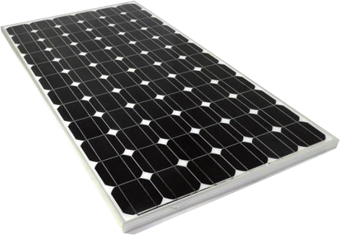Mono vs. Poly solar panels explained
Monocrystalline solar panels
Overview and Appearance
This is the oldest and most developed of the three technologies. Monocrystalline panels as the name suggests are created from a single continuous crystal structure. A Monocrystalline panel can be identified from the solar cells which all appear as a single flat color.Construction
To make solar cells for monocrystalline solar panels, silicon is formed into bars and cut into wafers. These types of panels are called “monocrystalline” to indicate that the silicon used is single-crystal silicon. Because the cell is composed of a single crystal, the electrons that generate a flow of electricity have more room to move. As a result, monocrystalline panels are more efficient than their polycrystalline counterparts.

Polycrystalline solar panels
Overview and Appearance
Polycrystalline or Multicrystalline are a newer technology and vary in the manufacturing process.Construction
Polycrystalline solar panels are also made from silicon. However, instead of using a single crystal of silicon, manufacturers melt many fragments of silicon together to form the wafers for the panel. Polycrystalline solar panels are also referred to as “multi-crystalline,” or many-crystal silicon. Because there are many crystals in each cell, there is to less freedom for the electrons to move. As a result, polycrystalline solar panels have lower efficiency ratings than monocrystalline panels.
Mono vs. Poly solar panels: Comparison table
| Monocrystalline | Polycrystalline | |
|---|---|---|
| Cost | More expensive | Less expensive |
| Efficiency | More efficient | Less efficient |
| Aesthetics | Solar cells are a black hue | Solar cells have a blue-ish hue |
| Longevity | 25+ years | 25+ years |
 |
 |
Advantages |
|
|
|
Disadvantages |
|
|
|
Polycrystalline cells, due to their cost-efficiency, are preferred by large-scale contractors. Nevertheless, monocrystalline solar panels are the number one choice of solar panel users. After reading that monocrystalline solar panels are more efficient than polycrystalline solar panels, one would definitely jump to the conclusion that the former is better than the latter. But wait, certain factors need to be considered before installing a solar panel. You must take into account are, the roof space, your budget, and the temperature of the region you wish to get it installed in. Depending on these crucial factors, the overall efficiency of the panel may vary. Hence, an outright conclusion about one panel being better than the other cannot be made. Keeping all these factors in mind, make a wise choice!

